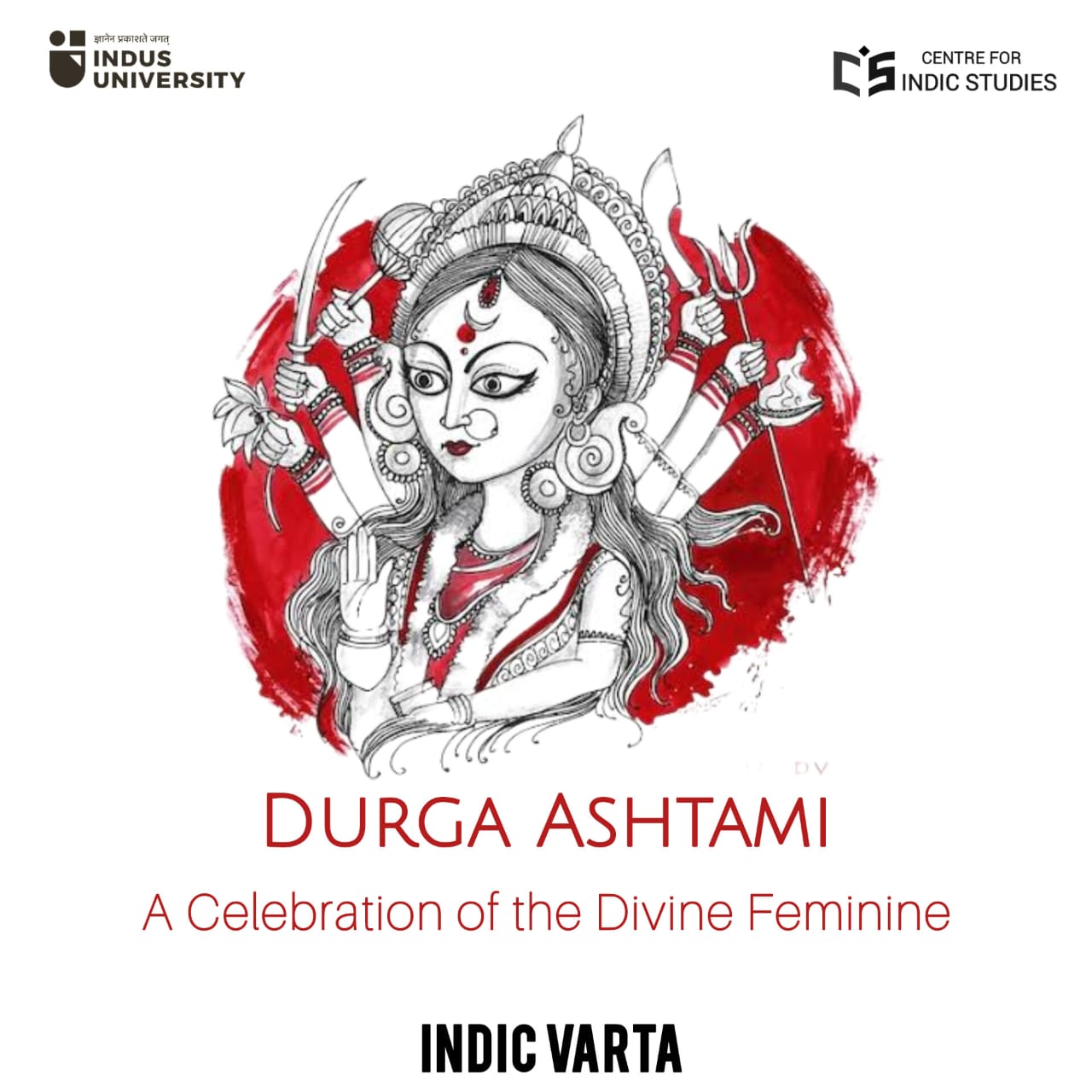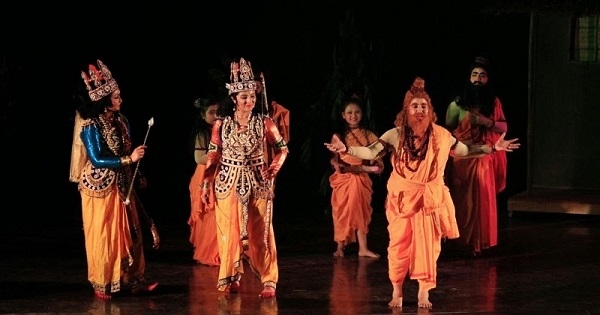- Visitor:389
- Published on: 2025-04-05
Durga Ashtami: A Celebration of the Divine Feminine
Durga Ashtami Tithi is more than a religious observance; it is a celebration of divine power, human resilience, and cultural richness. Whether through the solemnity of Sandhi Puja, the innocence of Kumari Puja, or the exuberance of Durga Puja festivities, the day encapsulates the essence of Shakti—energy that sustains and transforms.

Durga Ashtami, also known as Maha Ashtami or simply Ashtami, holds a special place in the Hindu calendar as one of the most revered days dedicated to Goddess Durga. Celebrated on the eighth day (Ashtami Tithi) of the waxing moon phase (Shukla Paksha) in the month of Ashvina (September–October), it is a pivotal moment during the Navratri festival and the grand Durga Puja celebrations. This day symbolizes the triumph of good over evil, the power of the divine feminine, and the spiritual renewal of devotees who seek the blessings of Maa Durga. In this article, the researcher has explored the significance, rituals, mythology, regional variations, and modern-day relevance of Durga Ashtami, offering a comprehensive understanding of this sacred tithi.
The Meaning and Importance of Ashtami Tithi
In Vedic timekeeping, a “tithi” refers to a lunar day, defined by the time it takes for the longitudinal angle between the Moon and the Sun to increase by 12 degrees. The Ashtami Tithi, being the eighth day of the lunar cycle, carries unique spiritual significance in Hinduism. While every month has two Ashtami Tithis—one during the waxing phase (Shukla Paksha) and one during the waning phase (Krishna Paksha)—the Ashtami of Shukla Paksha in Ashvina is particularly celebrated as Durga Ashtami. This day is believed to be especially dear to Goddess Durga, who is worshipped as the embodiment of Shakti (divine energy) and the destroyer of evil forces.
The importance of Durga Ashtami stems from its association with the Navratri festival, a nine-night celebration honouring the nine forms of Durga, known as Navdurga. On the eighth day, devotees venerate Maa Mahagauri, the eighth form of the goddess, who represents purity, peace, and intelligence. In this context, once upon a time, glorifying nine forms of Devi Durga, Chaturmukh Brahma told Markandeya Rishi:
प्रथमं शैलपुत्रीति द्वितीयं ब्रह्मचारिणी ।
तृतीयं चन्द्रघण्टेति कूष्माण्डेति चतुर्थकम् ॥
पञ्चमं स्कन्दमातेति षष्ठं कात्यायनी तथा ।
सप्तमं कालरात्रिश्च महागौरीति चाष्टमम् ॥
नवमं सिद्धिदात्री च नवदुर्गाः प्रकीर्तिताः ।
उक्तान्येतानि नामानि ब्रह्मणैव महात्मना ॥
(“Devi Kavach”, Chandi Shaptashati, Sloka: 3-5)
Mythological Significance: The Triumph of Durga
The mythology of Durga Ashtami is deeply rooted in the “Devi Mahatmya”, a sacred text within the Markandeya Purana that narrates the exploits of Goddess Durga. According to the legend, the demon Mahishasura, blessed with a boon that made him invincible to men and gods, wreaked havoc across the three worlds. The gods, unable to defeat him, combined their powers to create Durga, a warrior goddess armed with divine weapons. Over nine days and nights, Durga battled Mahishasura and his army of demons, culminating in his defeat on the tenth day, known as Vijayadashami. While Vijayadashami marks the final victory, Durga Ashtami holds special significance as the day when Durga’s power reached its zenith. In some traditions, it is believed that on this day, the goddess manifested as Chamunda—a fierce form emerging from her forehead—to annihilate Chanda and Munda, two of Mahishasura’s generals, and later Raktabija, a demon whose every drop of blood spawned new demons. Chamunda’s victory during the Sandhi Kaal (the transitional juncture between Ashtami and Navami) is considered a pivotal moment, symbolizing the eradication of evil at its root. This narrative reinforces the theme of righteousness prevailing over malevolence, a core tenet of Hindu philosophy.
Rituals and Observances of Durga Ashtami
Durga Ashtami is marked by a variety of rituals that reflect devotion, reverence, and community participation. These practices vary across regions but share a common thread of honouring the goddess’s divine energy. Below are some of the key rituals associated with the day:
1. Mahasnan and Shodashopachar Puja: The day begins with the Mahasnan, a ritualistic bath of the goddess’s idol, followed by the Shodashopachara Puja, a sixteen-step worship process. Devotees offer flowers, incense, lamps, food, and other items to invoke Durga’s blessings. In Durga Puja pandals, priests perform these rituals with great pomp, accompanied by the chanting of mantras from the Devi Mahatmya.
2. Sandhi Puja: One of the most significant rituals of Durga Ashtami is the Sandhi Puja, conducted during the last 24 minutes of Ashtami and the first 24 minutes of Navami. This 48-minute period, known as Sandhi Kaal, is considered highly auspicious, as it commemorates Chamunda’s slaying of Chanda and Munda. Devotees light 108 lamps and offer 108 lotus flowers or other symbolic items to honour the goddess’s fierce triumph.
3. Kumari Puja: A unique tradition observed on Ashtami is the Kumari Puja, where young, unmarried girls are worshipped as living embodiments of Durga. Typically aged between 2 and 10, these girls are adorned with new clothes, offered food, and given gifts. The ritual reflects the belief that the goddess’s energy resides in pure, innocent souls, and honouring them brings divine favour.
4. Astra Puja: In some regions, Ashtami is also known as Vira Ashtami, a day to worship the weapons of Durga. This practice, rooted in the goddess’s role as a warrior, involves cleaning and venerating arms or tools, symbolizing readiness to combat evil. In historical times, this ritual was prominent among warrior communities.
5. Fasting and Bhog: Many devotees observe a fast on Durga Ashtami, consuming only fruits, milk, or sattvic (pure) foods. The fast is broken with the offering of bhog—typically a meal of puri, chana (black chickpeas), and halwa—which is first presented to the goddess and then distributed as prasad among family and friends.
6. Recitation of Scriptures: Chanting the Durga Saptashati (700 verses from the Devi Mahatmya) is a common practice, as it recounts the goddess’s victories and invokes her protective energy. The recitation is often accompanied by the singing of devotional songs and the performance of aarti.
Regional Variations in Celebration
Durga Ashtami is celebrated with distinct flavours across India, reflecting the country’s rich cultural diversity:
West Bengal and Eastern India: In West Bengal, Assam, and Odisha, Ashtami is the highlight of Durga Puja, a five-day festival beginning on Shasthi (the sixth day). Grand pandals (temporary structures) house elaborately crafted idols of Durga, flanked by her children—Lakshmi, Saraswati, Ganesha, and Kartikeya. The day is filled with cultural performances, feasting, and the rhythmic beats of dhak (traditional drums). The Sandhi Puja is a focal point, drawing large crowds to witness the rituals.
North India: In states like Uttar Pradesh, Bihar, and Delhi, Ashtami is part of the broader Navratri celebrations. Devotees worship Maa Mahagauri, offering white flowers and sweets to seek purity and peace. The Kumari Puja is widely practiced, and community feasts follow the rituals. In some areas, the day coincides with Ram Lila performances, blending the worship of Durga with the narrative of Lord Rama.
South India: In Tamil Nadu, Karnataka, and Andhra Pradesh, Ashtami is observed with the worship of Durga as a fierce protector. Temples dedicated to the goddess host special pujas, and households perform Saraswati Puja alongside Durga’s rituals, preparing for the Ayudha Puja on Navami, where tools and weapons are honored.
Western India: In Gujarat, Ashtami is marked by vibrant garba and dandiya dances, celebrating Durga’s victory through music and movement. Devotees visit temples and participate in night-long festivities, wearing colourful traditional attire.
Spiritual and Cultural Significance
Durga Ashtami transcends mere ritualistic observance, embodying profound spiritual and cultural meanings. Spiritually, it represents the awakening of inner strength and the purification of the soul. Maa Mahagauri’s serene form inspires devotees to seek wisdom and detachment from worldly desires, while Chamunda’s ferocity reminds them to confront and overcome negativity. The day encourages a balance between gentleness and resilience, reflecting the dual aspects of human nature. Culturally, Durga Ashtami fosters unity and creativity. The construction of pandals, the crafting of idols, and the performance of traditional arts during Durga Puja contribute significantly to local economies and artistic heritage. In 2021, UNESCO recognized Kolkata’s Durga Puja as an Intangible Cultural Heritage of Humanity, highlighting its role in preserving Bengali culture and fostering social cohesion.
Durga Ashtami in the Modern Context
In contemporary times, Durga Ashtami has evolved while retaining its spiritual core. Urban celebrations now blend tradition with modernity, featuring eco-friendly idols made of clay and natural dyes to address environmental concerns. Social media platforms buzz with images of pandals, rituals, and festive greetings, connecting the diaspora to their roots. The festival also serves as a platform for social messages, with themes like women’s empowerment and sustainability often woven into pandal designs.
For many, Ashtami is a time of reflection and renewal. Professionals take a break from their hectic schedules to reconnect with family, while children revel in the excitement of fairs and festivities. The universal appeal of Durga’s story—triumph over adversity—resonates in a world grappling with challenges, making the day a source of hope and inspiration.
Durga Ashtami Tithi is more than a religious observance; it is a celebration of divine power, human resilience, and cultural richness. Whether through the solemnity of Sandhi Puja, the innocence of Kumari Puja, or the exuberance of Durga Puja festivities, the day encapsulates the essence of Shakti—energy that sustains and transforms. As devotees across India and beyond honor Maa Durga on this sacred tithi, they reaffirm their faith in the eternal victory of good over evil, drawing strength from a goddess who is both mother and warrior. In a world of constant change, Durga Ashtami remains a timeless reminder of the power within and the grace that guides us all.
- 194 min read
- 1
- 0










